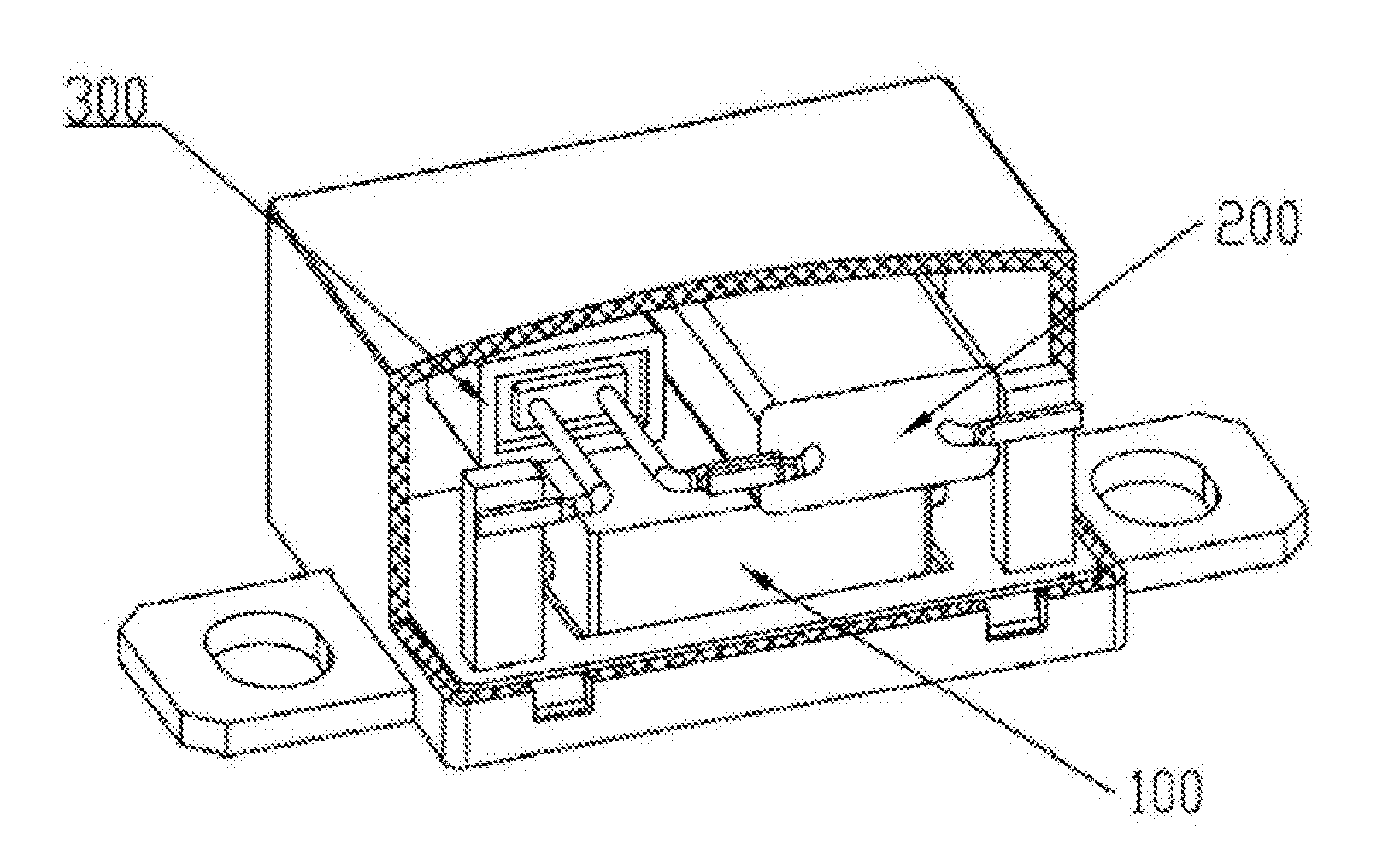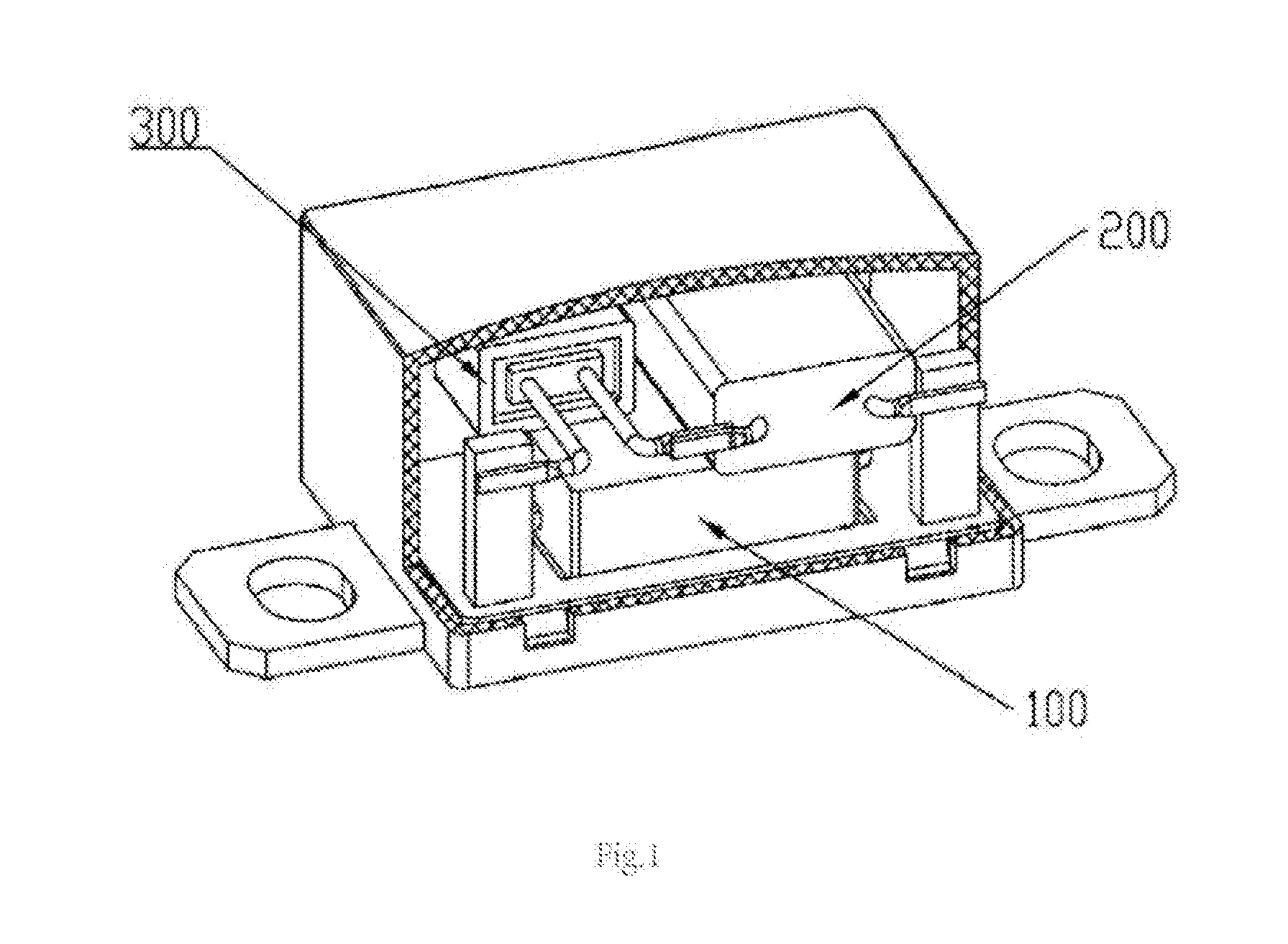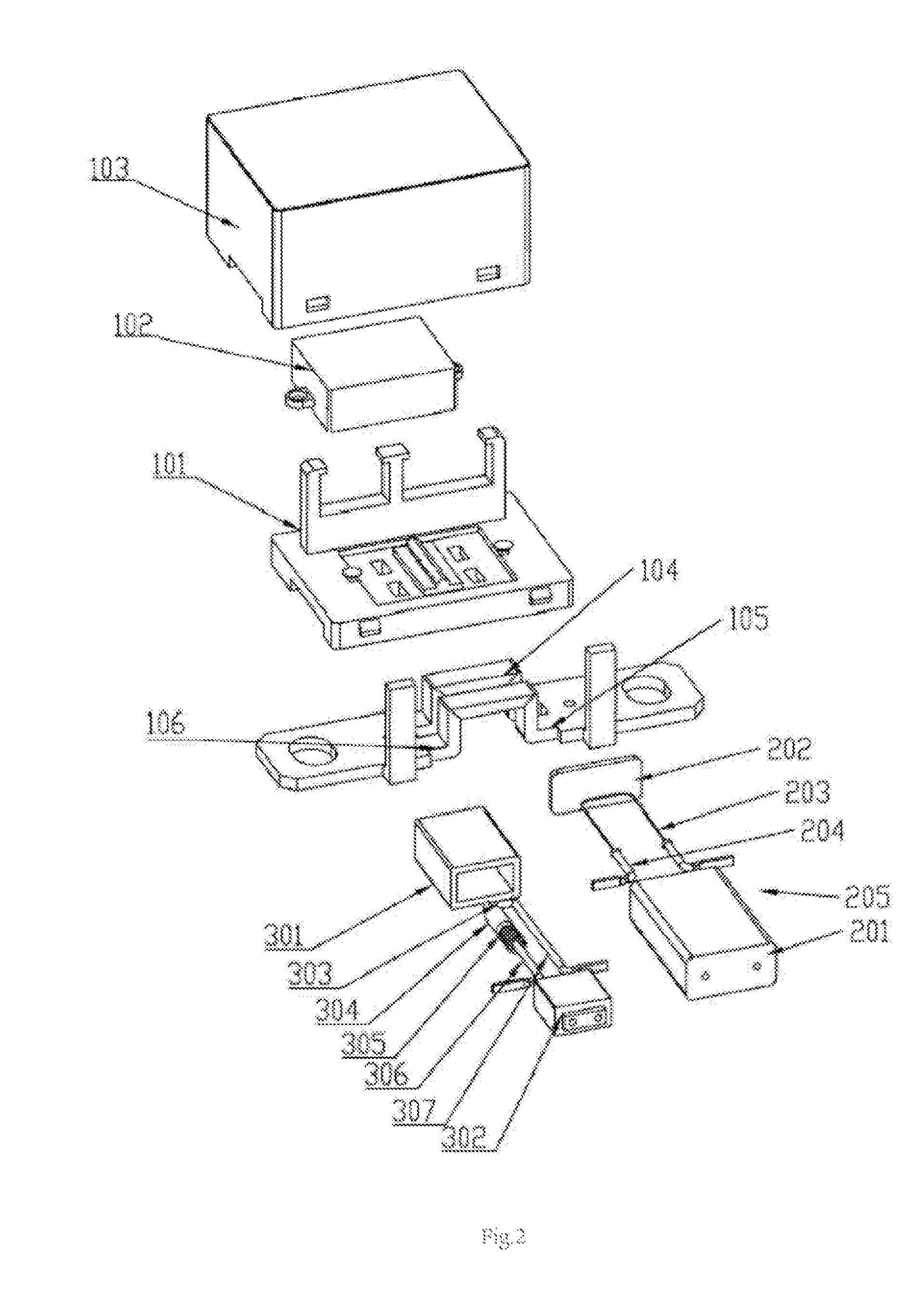High-voltage direct-current thermal fuse
a high-voltage direct-current, thermal fuse technology, applied in thermally actuated switches, electric switches, electrical devices, etc., can solve the problems of insufficient elasticity of the compressing spring in the compressed state to destroy the welding strength of fusible alloy wires, and achieve the effect of preventing further damage to other components, avoiding further damage to electronic components and fir
- Summary
- Abstract
- Description
- Claims
- Application Information
AI Technical Summary
Benefits of technology
Problems solved by technology
Method used
Image
Examples
embodiment 1
[0029]FIG. 1 and FIG. 2 respectively show the perspective partial profile diagram and the perspective explosive view of Embodiment 1 of the invention. As FIG. 1, FIG. 2 shows, the high-voltage direct-current thermal fuse of the embodiment of the invention includes insulating base 101 and a large casing 103 provided thereon. Regular thermal fuse 100, current fuse 200, and high-voltage low-current thermal fuse 300 are provided inside a cavity formed between insulating base 101 and large casing 103. Among others, high-voltage low-current thermal fuse 300 is connected in series to current fuse 200 sequentially to form a primary branch. Then, the primary branch is connected in parallel to thermal fuse 100. Next, thermal fuse 100 is connected in series into the high-voltage circuit to be protected, to provide the over-temperature protection for the high-voltage circuit.
[0030]Please refer to FIG. 2, thermal fuse 100 specifically includes small casing 102 which is arranged on insulating bas...
embodiment 2
[0041]FIG. 4 shows the circuit schematic diagram of Embodiment 2 of the invention. As an expanded solution, in this Embodiment 2, the high-voltage direct-current thermal fuse is composed of thermal fuse 100, current fuse 200, and high-voltage low-current thermal fuse 300 as the same as those in Embodiment 1. Among others, high-voltage low-current thermal fuse 300 is sequentially connected in series to current fuse 200 to form the primary branch. Next, the primary branch is connected in parallel to thermal fuse 100. Thermal fuse 100 is connected in series to the high-voltage circuit to be protected, so as to provide the over-temperature protection for the high-voltage circuit, which is not explained again here.
[0042]The differences between Embodiment 1 and Embodiment 2 lie in that: the high-voltage direct-current thermal fuse also includes N secondary branches, and each secondary branch includes the high-voltage low-current thermal fuse sequentially connected in series to the current...
PUM
 Login to View More
Login to View More Abstract
Description
Claims
Application Information
 Login to View More
Login to View More - R&D
- Intellectual Property
- Life Sciences
- Materials
- Tech Scout
- Unparalleled Data Quality
- Higher Quality Content
- 60% Fewer Hallucinations
Browse by: Latest US Patents, China's latest patents, Technical Efficacy Thesaurus, Application Domain, Technology Topic, Popular Technical Reports.
© 2025 PatSnap. All rights reserved.Legal|Privacy policy|Modern Slavery Act Transparency Statement|Sitemap|About US| Contact US: help@patsnap.com



